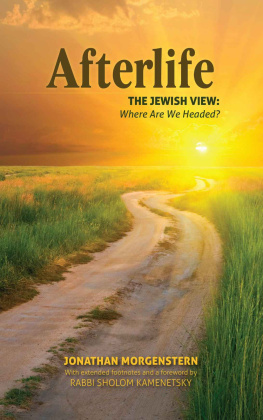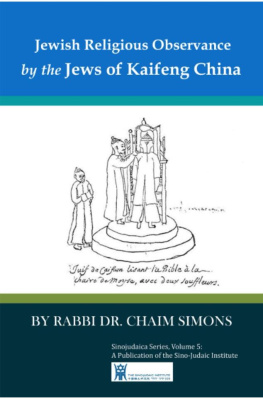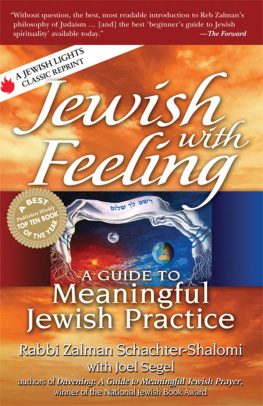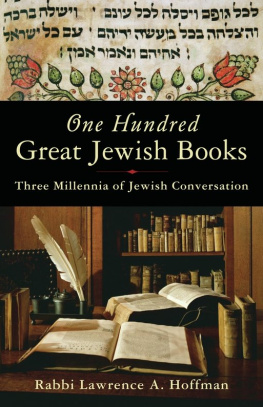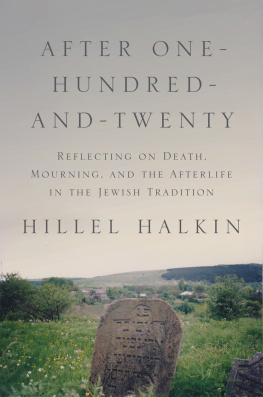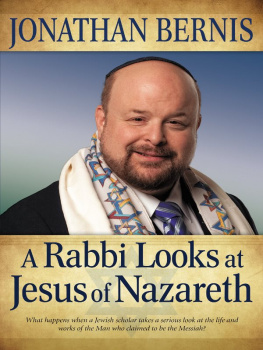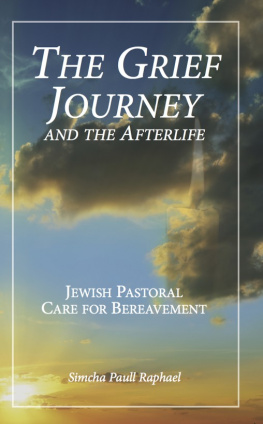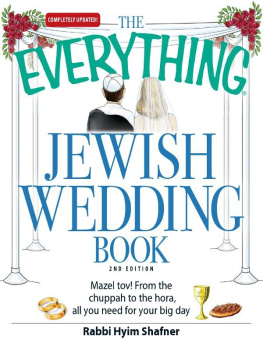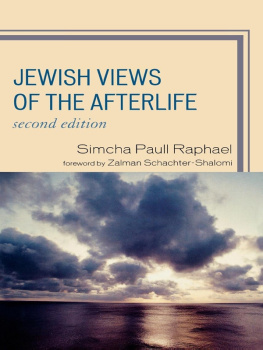

Mosaica Press, Inc.
2013 by Mosaica Press
Edited by Doron Kornbluth
Typeset and designed by Rayzel Broyde
All rights reserved
ISBN 13: 978-1-937887-25-4 ISBN-10: 1937887251
No part of this publication may be translated, reproduced, stored in a retrieval system or transmitted in any form or by any means, electronic, mechanical, photocopying, recording, or otherwise, without prior permission in writing from both the copyright holder and the publisher.
Published and distributed by:
Mosaica Press, Inc.
www.mosaicapress.com

Table of Contents
Resurrection:
Step Two in Bridging This World to the World to Come
Acknowledgements
I prepared this work in memory of my parents, Gail and Arthur Morgenstern, who epitomized the importance of refining ones moral character and achieving the maximum with each day of life.
The information and explanations in this work are largely based on the teachings and lectures of HaRav Sholom Kamenetsky, Rosh Yeshivah of the Talmudical Yeshiva of Philadelphia, who based his teachings on his extensive study of these issues as addressed in the Talmud and other parts of our tradition.
Words cannot fully express the amount of spiritual light and strength he has provided to me and my family. I am deeply grateful for the relationship Hashem has granted me with him, and for his enthusiasm, encouragement, and efforts to bring this work to its fruition.
Thank you to Jon Erlbaum for spending a significant amount of time reviewing, editing, and providing a unique perspective on this work. I am blessed to have a friend and learning partner like you.
My deep appreciation goes to the entire staff of Mosaica Press. Under the guidance of Rav Yaacov Haber, Mosaica has done a superb job helping to visualize, create, prepare, improve, and refine this book. I cannot recommend them enough. In particular, Rabbi Doron Kornbluth, Mosaicas senior editor, has been a full partner in this project it is hard to imagine the book coming to fruition without his energy, enthusiasm, and professional skill.
Thank you to my wife for helping simplify some of the ideas in this work, helping me grow as a person, and for being my partner in life!
And with deep appreciation I thank Hashem for all the blessings that He has bestowed upon me.
Jonathan Morgenstern
Philadelphia
5774 (2013)
Foreword
It is with trepidation, yet with a sense of urgency, that I pen this foreword. Trepidation, because of the nature of the subject matter in this small book. Urgency, because this book is long overdue.
I was privileged to have had the chance to meet a very special individual: Arthur B. Morgenstern. We established a time to learn Torah daily as he established his reconnection to his roots. One of the burning issues and questions he had was: What is the eschatological system that the Torah views? Is there a world beyond? Where does one go after death? These, and other questions of this sort, had us learning the classical Jewish sources that discussed these very interesting subjects.
There was, however, one catalyst that gave our discussions more urgency. One of Arts family members died and another family member decided to cremate the deceased. Art tried his best to persuade his relatives to accord the deceased a burial in accordance to Jewish law, but to no avail. The complete ignorance of Jewish belief in an Afterlife, simply didnt allow for any discussion. It broke Arts spirit to see his family member cremated. In his compassion for others, and as a merit for the deceased, Art initiated a project: He felt that there was a desperate need to educate the general public on these issues.
As difficult as these subjects are to address, they are crucial to be disseminated simply to allow for educated decisions.
Art and I started our project by recording a question-and-answer session between ourselves. Art would ask all the hard questions and I would try to answer, keeping in mind that I was addressing an audience with no Jewish education whatsoever. This formed the core of what we felt would eventually be a book geared to the secular public to help them understand and make informed decisions.
Unfortunately, God had other plans.
After a brief illness, Arts soul returned to its Creator. As time passed, our original dream to disseminate the Torahs view on the Afterlife and the importance of Jewish burial became a more distant dream.
But again, God had different plans.
Arts son, Jonathan, as part of his own personal search, picked up the gauntlet from where we left off. In his own course of life, Jon has come across many types of Jews, from all walks of life, that all share a common curiosity: What is the Jewish belief about the Afterlife? Where do we go after we die? Is there really a belief in resurrection? Do Jews believe in reincarnation? And the list goes on.
We are all naturally curious to know about the obscure and mystical world of souls and the Afterlife. Yet it is a subject seldom discussed and poorly understood. With Gods help, I was privileged to learn these deep and esoteric subjects and lecture about them extensively. The lectures were delivered to a highly educated audience over the course of four years. As with many topics within the realm of Torah, the information is expansive and contains many different opinions. Jon has managed to distill those lectures, follow-up questions, and conversations with me to clarify the material into a presentable book that the average reader can understand.
Being that there are different opinions about some of the issues discussed, we have avoided details and presented the ideas according to the consensus of opinions. The sources included can be used for further research.
My fervent hope is that the ideas presented in this book be read and reread, and will allow people to be more educated about their lives in general and their after-lives in particular.
I would also like to thank Jon for working on this project, for bringing it to fruition, and for allowing me to finally honor my pledge to Art to disseminate the importance of Jewish burial and what follows.
Let the merits of increased awareness of the Afterlife be a merit to his soul.
Sholom Kamenetsky
Philadelphia
5774 (2013)
Introduction:
Death the Elephant in Our Subconscious
Young children imagine that they will live forever. Then, one day, the child makes an [indelible] discovery. Someone he knowspasses away, and the child is shocked into reality: life comes to an end.
Slowly, it dawns on the child that what happened to others will happen to him; someday, he too will die. And as his fantasy of immortality fades, a bit of childhood innocence vanishes forever.
Soon, the fearful shock gives way to questions.What is it like to die? What is death really like? The child grows and matures and learns to stifle his questions. They dont seem so urgent as he perceives how slowly time passes. They dont bother him so acutely, at least not now.
But [these questions] remain buried within him. Indeed, it remains deep within all of us. And we worry; what is it like to pass through the gates of death? What will we experience when our time comes?
Next page
